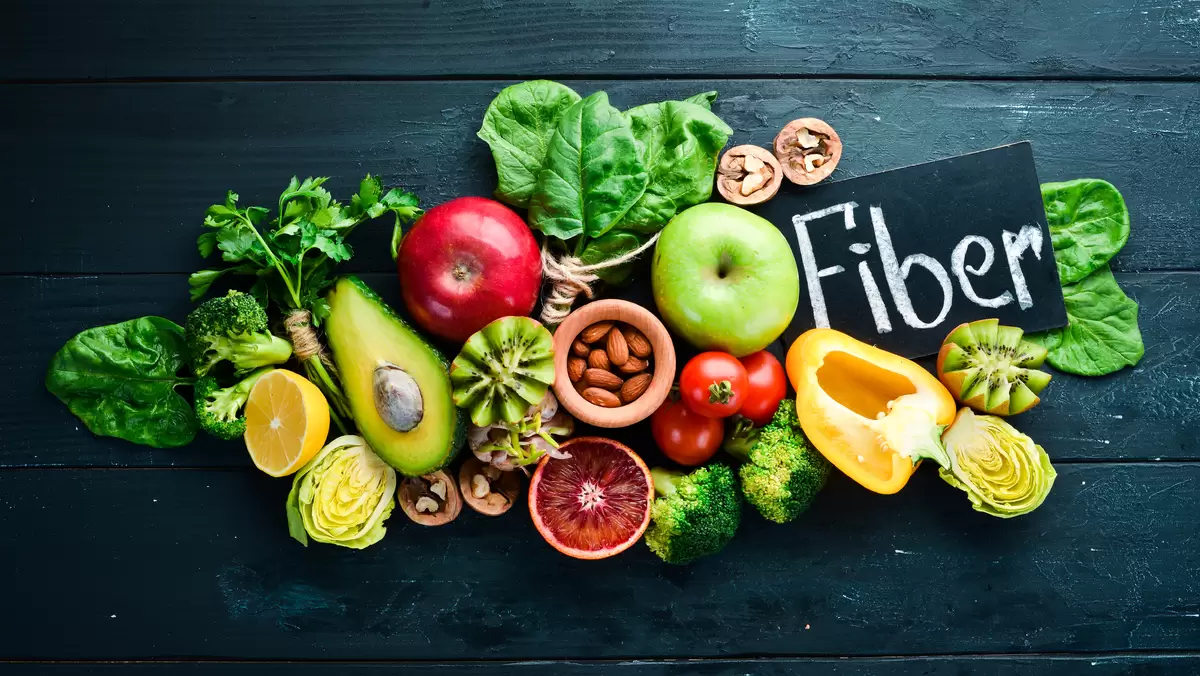Join Our Newsletter
Get our best recipes and health tips delivered right to your inbox!

If you’ve heard about high-fiber diets, you may now be seeing another buzzword: fibermaxxing. This new nutrition trend takes eating fiber to the extreme, with some people consuming far more than the recommended daily amount.
Supporters say fibermaxxing can improve digestion, help with weight management, and even protect heart health. But like any trend, it’s important to understand both the benefits of high fiber foods and the potential downsides before overloading your plate with beans, whole grains, or fiber supplements.
Our dietitians have put together a brief overview highlighting the benefits of fiber, why people may want to eat more of it, as well as the potential downsides of consuming too much. We’ve also included some delicious high fiber recipes from the Health eCooks test kitchen to help you add more fiber to your day.
Fiber is the part of plant-based foods your body can’t fully digest, and it comes in two forms: soluble fiber and insoluble fiber. Soluble fiber dissolves in water, creating a gel-like texture that slows digestion, helps regulate blood sugar, and lowers cholesterol levels. Insoluble fiber adds bulk to your stool, supporting regular bowel movements and overall digestive health.
Eating a diet rich in fiber is linked to numerous health benefits. High fiber foods can:
With all these benefits, it’s no surprise some people want to push fiber intake to the max. Fibermaxxing often involves eating large amounts of fiber-rich foods—like fruits, vegetables, beans, nuts, seeds, and whole grains—or adding fiber supplements to reach higher daily totals. For some people, this approach leads to better digestion, more stable energy, and improved heart health. But more isn’t always better. Going way above your body’s fiber needs can sometimes cause problems.
While fiber is essential for good health, consuming it in excess, or increasing it too quickly, can backfire. Common side effects of fiber overload include:
Another concern is relying too heavily on processed “high-fiber” products, like cereals or snack bars, which often contain added sugars, preservatives, or artificial sweeteners. Whole foods like fresh produce, legumes, and whole grains deliver far more nutritional value, providing vitamins, minerals, antioxidants, and plant compounds beyond fiber alone.
These recipes can help you add more fiber to your diet, along with other healthy nutrients.
This creamy, make-ahead breakfast combines fiber-rich rolled oats and chia seeds, delivering 16 g of fiber per serving, with protein from Greek yogurt for a satisfying, heart-healthy start to the day.
Loaded with fiber-packed black beans and chickpeas, this vibrant salad offers 8 g of fiber per cup, making it a flavorful and filling heart-healthy dish.
Featuring lentils and carrots as the stars, this curry bowl provides 11 g of fiber per serving along with plant-based protein, making it nourishing, hearty, and fiber-rich.
Packed with chickpeas, mashed avocado, and multigrain bread, this sandwich delivers 9 g of fiber per sandwich, combining plant proteins and healthy fats for a nutrient-dense, fiber-rich, grab-and-go meal.
Hearty farro and white beans come together in this zesty grain salad to provide 8 g of fiber per cup, offering whole-grain goodness and legumes in every refreshing, herb-filled bite.
If you’re interested in fibermaxxing or simply want to eat more high fiber meals, here are some healthy ways to do it:
Fibermaxxing can be beneficial if done thoughtfully, but it’s not about consuming as much as possible. The goal is to find the amount of fiber intake that works best for your body while focusing on whole, nutrient-dense foods. When done right, eating high fiber foods can support long-term health, steady energy, and a happier gut.